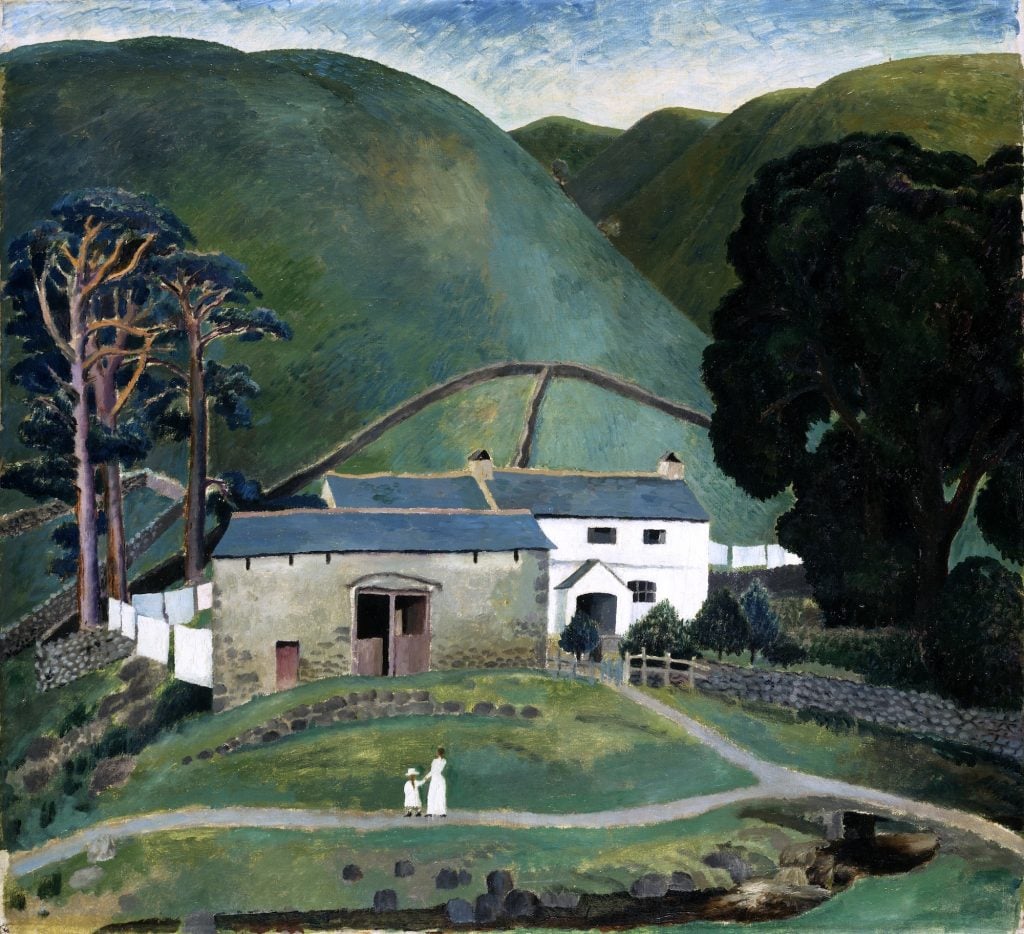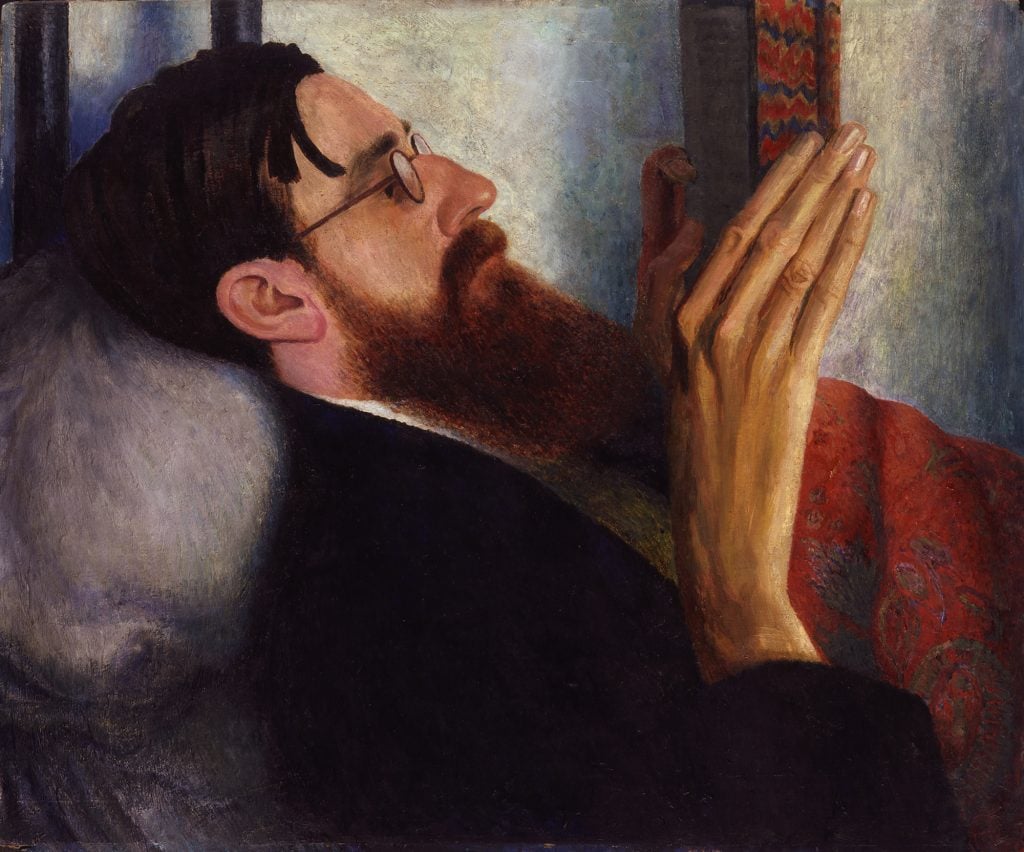
12 Nov Who Was Dora Carrington? A New Almodóvar Movie and Gallery Show Shine a Light on Forgotten Bloomsbury Artist
Source Credit: Content and images from Artnet News. Read the original article - https://news.artnet.com/art-world/who-was-dora-carrington-a-new-almodovar-movie-and-gallery-show-shine-a-light-on-forgotten-bloomsbury-artist-2568187
There is a moment in Pedro Almodóvar’s new Golden Lion-winning film The Room Next Door, where Tilda Swinton’s character Martha asks actress Juliane Moore, who plays a writer named Ingrid, what her next book will be about.
Ingrid pauses thoughtfully and sighs before telling her it’s about Dora Carrington, a Bloomsbury artist who was obsessed with writer Lytton Strachey, and who, she says is far less famous than that “other” Carrington artist—Leonora. The “other” as many may already know is a famous Surrealist artist who has been getting her due of late, thanks in large part to prominent placement in the 2022 Venice Biennale.
I knew that The Room Next Door is based on a 2020 bestselling novel by author Sigrid Nunez, What Are You Going Through.
However, I had never heard of Dora Carrington, and assumed she was a fictional name and creation, although I thought it unusual that the film would place her alongside real-life names like Strachey and Leonora. So I was surprised to learn that Dora was indeed a real-life artist in the Bloomsbury circle, who was known for her wide-ranging art practice and unconventional, adventurous life. Carrington, who often preferred to go only by her surname, was openly bisexual and known for her many love affairs, including those seen as doomed or hopeless by observers.
So who is this mysterious, fascinating artist that seems to have slipped beneath the radar?

An early photograph (ca. 1920) of British artist Dora Carrington (1893-1932). Possibly taken at the home of Lady Ottoline Morrel. Photo by Frances Partridge/Getty Images.
She was the subject of another film, the 1995 vehicle, Carrington, by Christopher Hampton, starring Emma Thompson and Jonathan Pryce. My colleague Ben Davis wrote about that film and other artist biopics back in 2019. The year that the film was released was also the same year that the last major show of her work was organized at London’s Barbican, so it’s been nearly three decades since she felt the glow of the art world’s spotlight.
Fittingly, a show now on view in the U.K. titled, “Dora Carrington: Beyond Bloomsbury,” is at Pallant House Gallery in Chichester, through April 27, 2025. It was co-curated by writer Anne Chisholm, editor of Carrington’s Letters (2017) and curator and art historian Ariane Bankes. The show aims to reveal the continued relevance of Carrington’s remarkable work and unconventional life.
In a video interview from Chichester on the eve of the Pallant House opening, Chisholm told me: “The timing could not be better. We could not believe it when we saw that film, especially since we didn’t know that it was in the offing. We were completely surprised,” she said about viewing the Almodóvar film.
Having edited those “completely brilliant,” letters in 2017, Chisholm said the idea of a new exhibition occurred soon after and she teamed up with Bankes to organize the show. I asked the two women why it seemed Carrington had been largely forgotten.

Dora Carrington, Farm at Watendlath (1921). Presented by Noel Carrington, the artist’s brother, 1987. Image courtesy Tate.
In addition to the fact that she died nearly a century ago in 1932, Bankes noted that “during her lifetime she was very diffident about exhibiting her works and exhibited very few in her lifetime. She actually destroyed a lot of her work, so there isn’t a vast oeuvre.” Carrington, who was distraught at the death of her lifelong love, Strachey, died by suicide, at age 38.
Chisholm says she hopes that with this show, they are “bringing her out of the shadows,” and will further send viewers back to her letters which she calls “absolutely enchanting,” and possibly “the best things she ever did.”
It seems like Carrington’s life may resonate with modern-day audiences. Chisholm notes: “her way of life, her difficulties with her sexuality and her gender, all of that has become of more interest and her life is seen as more groundbreaking even in terms of Bloomsbury.”
Further, Carrington was an artist who moved between media. “She painted wonderfully and decorated interiors of her house beautifully,” said Bankes. “She painted tiles. She made bookplates for her friends. She was extraordinarily versatile. I think there is much more acceptance now of the breadth of her output.”

Carrington, Lytton Strachey Reading (1916) in “Dora Carrington: Beyond Bloomsbury” 9 November 2024–27 April 2025 at Pallant House Gallery, Chichester.
©National Portrait Gallery, London. Bequeathed by Frances Catherine Partridge (née Marshall), 2004 © National Portrait Gallery, London
Of course, as to the original inspiration, I eventually went straight to the source, Nunez herself, to ask how and why she placed Carrington in the novel. The story delves into the relationship of two reunited, formerly very close friends as one (Moore) supports the other with decisions she makes amid her (Swinton) terminal illness.
Via email, Nunez told me: “About Dora Carrington, I write about her and her relationship to Lytton Strachey in What Are You Going Through, but only very briefly, on pages 64-66, in a discussion of women in strange or hopeless love. I don’t write about her work at all. Almodóvar used this brief mention to invent a conversation about Carrington between his two female leads… that scene is not in my book.”

Dora Carrington,Iris Tree on a Horse, (circa 1920s) . The Ingram Collection.
Image courtesy The Ingram Collection
I asked about another mini-art plot in which Ingrid and Martha travel to a stunning rental house in upstate New York and are admiring a painting on the wall, but also debating whether or not it’s a real Edward Hopper, and if the property owners would leave something so valuable there.
Nunez told me: “As for the Edward Hopper painting, that is another invention of Almodóvar’s. There is a painting, a portrait of a woman, in the Airbnb where the two women in my novel go to stay, but it is not a Hopper and the artist is not known. It is described as bringing to mind John Singer Sargent’s portrait of Madame X.”
In a statement, Almodóvar noted that The Room Next Door is his first feature film in English but said any “insecurity disappeared after the first table reading with the actresses, with the exchange of the first indications.”
“People talk a lot in my films” he added, “Among all the narrative elements (all of them important and in which I am unreservedly involved), it is the actors who really tell the story. In The Room Next Door, Tilda Swinton and Julianne Moore take the weight of the whole film on their shoulders, and they are a spectacle. I have been fortunate in that both give a veritable recital. At times during shooting, both the crew and I were on the verge of tears watching them. It was a very moving shoot and, in some way, blessed.”
“Dora Carrington: Beyond Bloomsbury,” is on view at Pallant House Gallery in Chichester, and runs through April 27, 2025.
The Room Next Door will be released on December 20, 2024.
Source Credit: Content and images from Artnet News. Read the original article - https://news.artnet.com/art-world/who-was-dora-carrington-a-new-almodovar-movie-and-gallery-show-shine-a-light-on-forgotten-bloomsbury-artist-2568187

